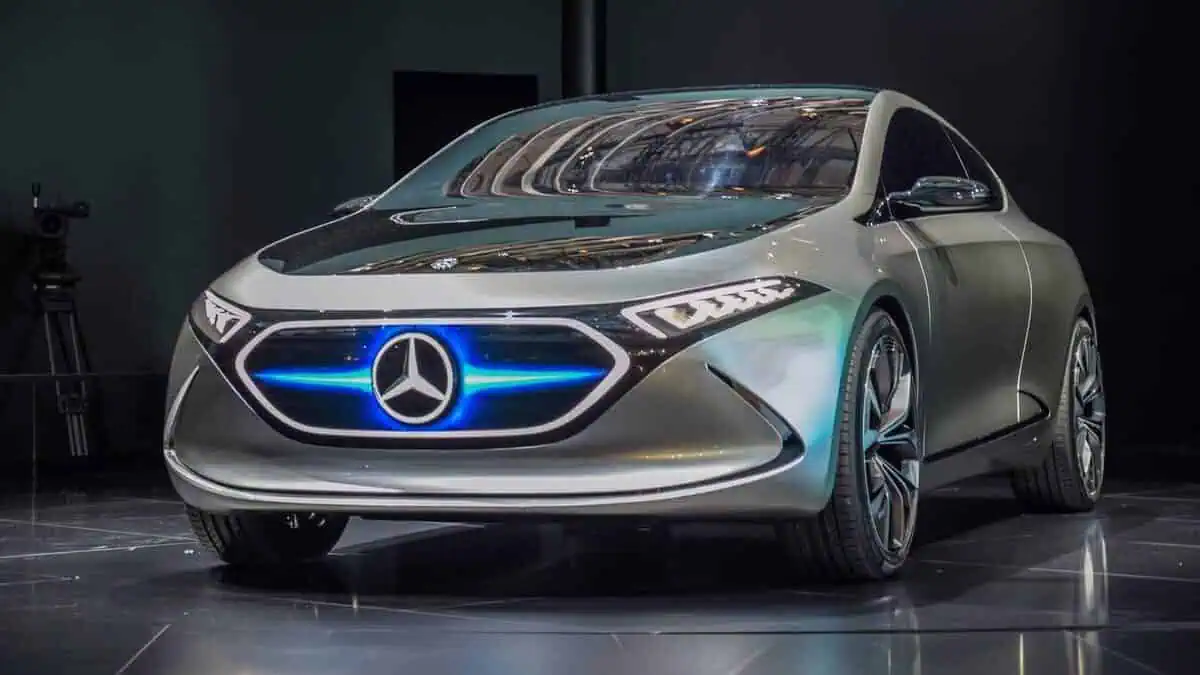German legacy automaker Mercedes-Benz demonstrated the high safety level of its electric vehicle offerings by colliding the popular EQA and EQS into each other, Automotive News reports.
Mercedes seeks to prove that its EV models are “every bit as safe” as all cars in its brand portfolio by stimulating a real-world crash incident. The initiative marks the world’s first-ever public crash test between two electric vehicles.
Public crash test details
Mercedes-Benz conducted the groundbreaking public crash test using the EQA and EQS electric vehicles, surpassing the legal standards and those of the ratings industry. It is also worth noting that both models carried two adult dummies, including three females and one male.
For context, Euro NCAP utilizes a 1,400 kg trolley with an aluminum honeycomb barrier to arrange frontal impact tests at 50 km/h speed.
On the other hand, the German automaker utilized its two electric SUVs that are heavier at approximately 2.2 and 3 tonnes, respectively.
Impressively, the EQA and EQS were faster at 56 km/h, surpassing the industry standards. It also has a 50% frontal overlap. According to the press release, the models’ substantial deformation induced by the crash may seem bad to non-expert people.
As per Mercedes’ engineers, it demonstrates the models’ capacity to efficiently absorb the collision impact by merely deforming.
It allows the passenger safety cell of the models to remain intact while still being able to open doors.
“In an emergency, this would make it possible for occupants to exit the vehicle on their own or for first responders and rescue personnel to reach them. The high-voltage system in the EQA and the EQS SUV switched off automatically during the collision.”
Mercedes-Benz
Results
Presented below are the results of Mercedes-Benz’s public crash test, as indicated by the automaker in its slide presentation:
- Low probability of severe injuries
- Passenger cells remain intact
- Doors of both vehicles can be opened after the crash
- Both high-voltage batteries remain intact
- High-voltage systems of both cars switched off automatically
All these remarkable results were achieved under the following compatibility test configurations:
- EQS SUV and EQA
- 50% frontal offset crash
- Speed = 56 km/h (both vehicles)
- Female and male dummies in front seats
Mercedes’ commitment to safety
Mercedes-Benz developed a multi-phase high-voltage protection concept for its electric vehicle models. It includes eight key factors boosting the safety of the EVs’ battery and parts with a voltage beyond 60 voltage, according to Automotive Testing Technology International. Some of these are as follows:
- separate positive and negative wiring
- self-monitoring high-voltage system
“Safety is part of Mercedes-Benz’s DNA and one of our core commitments to all road users. And to us, protecting human lives is not a question of drive system. The recent crash test involving two fully electric vehicles demonstrates this. It proves that all our vehicles have an equally high level of safety, no matter what technology drives them. We are working hard to achieve our vision of accident-free driving, which goes beyond the “Vision Zero” objectives set by the WHO and the United Nations Regional Commissions. We don’t just want zero traffic fatalities by 2050 and a halving in the number of traffic fatalities and serious injuries by 2030 compared to 2020. Our goal by 2050 is zero accidents involving a Mercedes-Benz vehicle.”
Markus Schäfer, Member of the Board of Management of Mercedes-Benz Group AG, Chief Technology Officer
Such initiatives are indeed remarkable, as they demonstrate Mercedes’ efforts to improve the safety of its electric vehicle offerings. In fact, its high internal safety regulations beat the industry’s legal standards and those employed by consumer protection organizations. In effect, it can significantly encourage more customers to trust the EV technology’s safety and capabilities, combatting the most common misconceptions about the shift to EVs.






